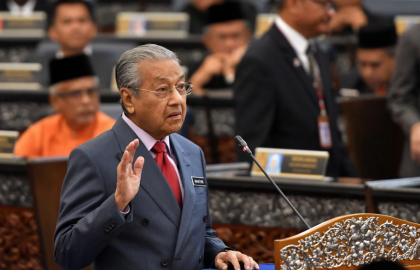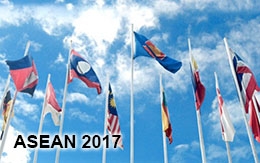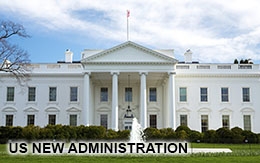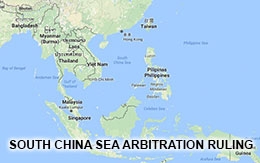New Mahathir Administration's South China Sea Policy
Malaysia’s approach on South China Sea under Mahathir may provide additional gain for ASEAN collectively, now that Malaysia can provide a strong voice in dealing with China on pushing for a legally binding COC.

Malaysia’s 14th general elections on 9 May 2018 and the formation of new coalition government under Tun Mahathir Mohammad signify new directions not only in the political life of the nation but across all spectrums as the country seeks to continue its trajectory towards developed nation status. According to the Prime Minister, the government will pursue sound and sensible economic development policies to address, among others, the nation’s current high levels of foreign debt.
Among the first questions posed by foreign media to the Prime Minister were about the government’s approach to Chinese investments, his views on China’s Belt and Road Initiative, Malaysia-China relations, and South China Sea issues.
The outcome of Mahathir’s meeting with Chinese President Xi Jinping on 20th August 2018 generally indicates no major shift or strategic change in Malaysia-China relations. Although two huge infrastructure projects involving Chinese investments and having strong South China Sea underpinnings, the East Coast Railway Link and the Trans-Sabah Gas Pipeline in Sabah, were cancelled, the reasons are more due to domestic economic conditions and long term foreign debt issues, rather than underlying shifts in the long standing cordial relationship between the two nations. Malaysia recognises the importance of China as a successful Asian economic power to her domestic interests but would prefer forging a relationship based on shared interests and mutual benefit. President Xi Jinping expressed China’s commitment to enhance friendly ties and settle issue through peaceful negotiations.
Despite expectations that both countries would discuss South China Sea issues - long the bone of contention between China and South East Asian claimants - no statement was issued on that matter. Nevertheless, Malaysia adopts peaceful dispute management and pledges to support non-military activities by all ASEAN nations as well as countries like China and the US. In addition, Prime Minister Mahathir reaffirmed that Malaysia will maintain its presence and retain the features that are within her claims in the South China Sea.
The long standing South China Sea Dispute
Geo-strategic interests, military developments, major power relations, and struggles for rules-based legal orders dominate maritime matters on the Indo-Pacific front. This situation is further complicated with the added element of the broader US-China relations and how the two nations work around their respective policies and strategies. China’s emergence as a major economic power, increased military spending by Asian countries led by China, and the situation in the South China Sea are a volatile mix that provide opportunities but also expose nations to vulnerabilities and perils. Malaysia is not spared this dilemma and needs to tread carefully without jeopardizing her national sovereignty and interests.
Possible scenarios that may escalate tensions in the maritime domain include heightened debates and excessive activities of stakeholders concerning ongoing overlapping claims in the South China Sea, the East China Sea, and the Indo-Pacific region. Malysia is also watchful of efforts to put forward joint petroleum exploration in the EEZs and the continental shelves of some coastal states and the possibility of the establishment of Air Defense Identification Zones (ADIZ) in the South China Sea.
More recently, attempts to designate Marine Parks and subsequent law enforcement regulations by coastal countries, intensification of military drills, and freedom of navigation operations have raised the discomfort levels and concerns among various countries in the region. Besides, the revitalization of the Quadrilateral Security Dialogue (QUAD) between India, Japan, Australia, and the United States in the Indo-Pacific should be taken into serious consideration as such moves would certainly create tensions with China.
China has vowed to safeguard its interests in the maritime domain, especially in the South China Sea, as repeatedly reiterated in her policy statements and strategic goals documents. China envisages her position to be one of the world’s top eight maritime powers by 2030 and a mid-level maritime nation among the top five maritime powers. Plans are being laid for China to be among the top three maritime powers by the 100th anniversary of the establishment of the PRC in 2049.
In regard to the claimed features in the South China Sea, China has deployed a range of military hardware, anti-ship and surface-to-air missiles, and electronic jammers in the area where it has built islets and turned them into hardened military facilities. This militarization complicates matters relating to the management of South China Sea issues by China and ASEAN as they impinge on sensitivities of the concerned countries. Moves by the US, Japan, Australia, and some European countries also have a bearing on the situation and significantly impact peace and stability in the region and beyond. While China’s recent actions seem to be a reaction to the US presence in the South China Sea, its military build-up and strongly worded statements show an increasingly strident position and sending of assertive signals not just to the external powers but to all claimants including Malaysia.
Malaysia's stance
Malaysia’s stake in the South China Sea requires continuous and judicious engagement with China in order to safeguard her sovereignty over Malaysia’s positions and features within the area. In this regard, Malaysia under Mahathir has a number of strategic and diplomatic advantages. Among others, Mahathir was in the government administration when Malaysia made important decisions on strengthening its position in the South China Sea in the 1970s and 1980s. He also led the nation at a time when the Declaration of Conduct of Parties in the South China Sea (DOC) between ASEAN and China was adopted in 2002. Furthermore, Malaysia’s involvement and position as an influential middle power and one of the founding members of ASEAN can be brought to bear on and have a significant impact on South China Sea diplomacy.
Malaysia’s approach and stand on South China Sea issues have been consistent in supporting the rule of law that include principles of international law, national interests, sovereignty and territorial integrity, domestic/municipal, customary and international laws, United Nations Convention on the Law of the Seas 1982, as well other international conventions and regulations related to the management of its seas. Since the formation of the new government in May, Malaysia’s leadership is re-looking at reinforcing the ASEAN concept of Southeast Asia as a Zone of Peace Freedom and Neutrality (ZOPFAN). This is primarily to avoid Southeast Asia becoming a zone of tension between the military powers.
Malaysia supports the establishment of a rules-based framework with a set of norms to guide the conduct of parties and promote maritime cooperation in the South China Sea. Currently, there are a number of legal and agreed-upon frameworks relating to cooperation in the South China Sea, which are recommendatory and non-obligatory in nature. The 2002 DOC advocates self-restraint and promotes possible areas of cooperative activities.
The ongoing negotiations on formulating a binding Code of Conduct (COC) and confidence building initiatives by Track 1.5 and Track 2processes would most likely continue. Malaysia’s approach on South China Sea under Mahathir may provide additional gain for ASEAN collectively, now that Malaysia can provide a strong voice in dealing with China on pushing for a legally binding COC. At the same time Malaysia’s continued active participation and involvement in the process will ensure her interests are taken into consideration and protected.
Sumathy Permal is a Fellow with the Maritime Institute of Malaysia.Click here for pdf file










